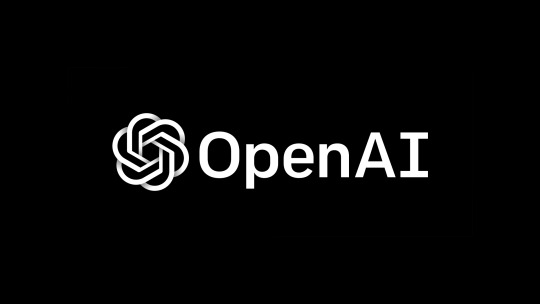Text
Responsible and Effective Bugfinding
As long as people have written code, we have also developed methods for finding faults in software. This piece is not about responsible disclosure of security issues. Over the past few decades, there has been an explosion of software in use, and with that, the number of latent bugs has also grown. Since the software is increasingly used to monitor and control aspects of our lives, and because systems are often networked, bugs can have more impact than they previously did. Cheap computer power for brute-force bug-finding is ubiquitously available. OSS-Fuzz is a good example of a successful external bug-finding effort; according to its website, it "has found over 20,000 bugs in 300 open source projects.". How to conduct an external bug-finding effort so as to maximize the overall benefit of the project is discussed in this article. Basically, this kind of work must be done carefully, thoughtfully, and collaboratively with software developers. A huge pile of bugs thrown over the wall and walked away is unlikely to be of much use. I haven't seen much written about this, but "A Few Billion Lines of Code Later: Using Static Analysis to Find Bugs in the Real World" is excellent and touches on some of the same issues. There is often a mismatch between project developers and bug finders in terms of costs and incentives. It can be cheap for external bug finders to find hundreds or thousands of bugs in a large, soft target if they have the right technology (such as a shiny new fuzzer). There are two motives for bug finders: altruistic (to improve the reliability of the targeted software by finding lots of bugs), and selfish (a tool or technique that can find lots of previously unknown defects is demonstrably powerful). Developers of the targeted project, on the other hand, usually appreciate bug-finding efforts (of course, they too want a reliable system), but they do not want a large number of reported bugs. To begin with, every bug report requires a great deal of attention and effort, usually far more effort than was required to simply discover the bug. Second, a large bug count may negatively reflect on the project and its developers.

https://8thlight.com/blog/doug-bradbury/2016/06/29/how-to-find-bug-in-your-code.html
https://youtu.be/2caosXHOtJ0
https://youtu.be/C2kyxaQaXKc
0 notes
Text
How programmers make sure that their software is correct
In software, it is important to make the software that is written accurately. If we compare double-entry accounting to software testing, then we can say that converting from a naïve accounting system to a double-entry accounting system is extremely difficult for accountants. Similarly, testing should be first on your mind when building serious software. Software errors can cause problems ranging from a program that terminates abruptly to database corruption. An example is the cost of a software bug that caused the explosion of an Ariane 5 rocket in 1996. The best engineers and scientists use several strategies to ensure correct software, but it is not practical to write multiple versions of your software. Many programmers had advanced mathematical training, and they hoped that we could prove that a program is correct. Let us consider an example of formal verification. We can use the z3 library from Python to verify that a given inequality holds for all 32-bit integers. The z3 library displays a positive integer when a counterexample is found. If the variable is negative, the inequality (( 1 + y ) / 2 y )) is false. Computer scientists like Dijkstra expressed doubts about formal methods in the 1970s. It is impractical to apply a mathematical method on a large scale, as errors can take many forms, and not all errors can be represented in a mathematical form. Over time, programmers have come to understand the importance of testing their software. The two main categories of tests are functional and non-functional tests. Unit tests aim to test a specific component of a software program, whereas integration tests aim to test a complete application, and therefore can require access to network resources and data. Unit tests are often done as part of a continuous integration process, which can be done at regular intervals or whenever a change is made to the code. It is possible to integrate tests into an application. However, unit tests are a component reserved for programmers and do not affect the functioning of the application. Programmers often consider tests as important as the original code. This slows down the initial speed of writing code but ultimately saves time in the long run. Tests should be simple, run quickly, and use little memory. Unfortunately, it is difficult to define exactly how good tests are. In the Go language, we can run tests with the command go test. If a test is passed, the test coverage is 100%. In practice, random tests are often used instead of exhaustive tests, and these can be kept deterministic by providing a fixed seed to the random number generator. Tests based on random exploration are part of a strategy often called fuzzing.

https://lemire.me/blog/2022/01/03/how-programmers-make-sure-that-their-software-is-correct/#:~:text=Reading%20tests%20allows%20programmers%20to,written%20in%20a%20programming%20language.
https://youtu.be/1I0sCD1CUQ4
https://youtu.be/owtO0cKwtk4
0 notes
Text
Are we at the end of the monopolistic web?
In recent years, we saw the concentration of newspaper ownership, accompanied by the surge of online journalism. A single carrier/distributor can more easily distribute competing services than a monopolistic publisher. The current giants (Facebook, Twitter, and Google) were originally neutral distributors. Countries like Russia and China had competing services, but most of the rest of the world has fallen back on American-based large corporations for their web infrastructure. Google searches are geared to favor some of their own services, but Facebook and Twitter are also becoming publishers of their own content. If my model is correct, we will see strong competitors for Facebook and Twitter, and advertisements on a platform that is no longer universal will be less valuable. The concept of two-sided markets is not new. For example, shopping malls, job placement services, credit card companies, and newspaper classified ads are all two-sided markets. These platforms are well-established, with the consensus being that they offer users significant benefits, primarily by reducing the transaction costs of finding other parties to interact with. In light of the rapid growth of large platforms, some activists, scholars, and political officials are concerned about their impact on competition. These concerns seem to stem from two areas. The first is that some companies, such as Amazon, do not only sell directly to customers, they also connect suppliers to their customers through their platforms. Concerns have been raised about platforms possibly using data about third-party sales to determine whether to develop and sell competing products. Furthermore, many platform markets have one or two dominant players due to network effects. Some advocates claim that this harms innovation and consumer welfare. In addition, some worry that the data platforms collect gives the companies an advantage they cannot overcome because it gives them an advantage over their competitors. In our report, we demonstrate that these concerns are largely unfounded. Platforms create significant economic value. Instead of being lazy monopolists that artificially limit supply to increase profits, these firms seek to grow rapidly.

https://www.vox.com/the-goods/2020/2/18/21126347/antitrust-monopolies-internet-telecommunications-cheerleading
https://youtu.be/k4m-phHynmE
https://youtu.be/7rH_W5PN8ns
0 notes
Text
Sex Robots Get More Intimate with Humans, Thanks to AI
Throughout the developed world, artificial intelligence (AI) is becoming more commonplace, aiding with everything from hospital operations to defusing explosives (Weng et al., 2009; Linkov et al., 2018; Murphy, 2019). The sex industry has traditionally been on the forefront of implementing new technologies, and integrating artificial intelligence won't be any different. AI applications already mimic human behaviors (Weng et al., 2009), such as conversational Alexa and Siri, which use machine-learning technology to better predict, understand, and correctly fulfill our informational requests. Despite this, the sex industry is advancing AI to fulfill human emotional and physical needs. Though Alexa manufacturers decided to program the software to refrain from engaging with questions of a sexually explicit or harassing nature (Crum, 2018), digital assistant developers have reported that at least 5% of user interactions were inexplicably sexual (Samuel, 2019). To meet this demand, sex dolls can be embedded with artificial intelligence. A sex robot can detect touch and movement, blink, move their brows, turn and tilt, and hold conversations (Realbotix, 2014; Mlot, 2018). These conversations include simple functions, like remembering facts, and more complex functions, like engaging with their partners' emotions (Shen, 2019). Artificial intelligence (AI) integrated with traditional (e.g., chemicals) and new technologies (e.g., advanced materials) may present unknown and unpredictable risks in sex robots. The lack of public health data surrounding sex robots has already been noted (Cox-George and Bewley, 2018), and concerns include addiction, social isolation, non-consensual recreation of real people, and enabling misogyny, racism, and pedophilia, though supporters have also claimed that sex robots could provide safe outlets for harmful urges (see Morin, 2016; Readhead, 2016; Richardson, 2016; Maras and Shapiro, 2017; Sharkey et al., 2017; Campaign Against Sex Robots, 2018). However, the generation advanced for intercourse robots may additionally pose dangers. Herein, we recall the pathway for dangers to emerge from AI development inside intercourse robots and argue that an aversion to regulating delight devices, blended with an inherent ability for intercourse to spur technological innovation may also produce particular dangers. AI improvement in intercourse robots calls for on the spot coverage attention.

https://theconversation.com/us/topics/sex-robots-51908
https://atlasofthefuture.org/the-sex-robots-are-coming/
https://youtu.be/orBH_Qnw3eY
https://youtu.be/5Jn1WLJTvQA
0 notes
Text
The rise of language-generating AI
Generative Pre-trained Transformer 3 (GPT-3) is an autoregressive language model that uses deep learning to produce text that appears to be human-like. GPT-3, which was created by OpenAI, a San Francisco-based artificial intelligence research laboratory, is the third-generation language prediction model in the GPT-n series. The full version of GPT-3 includes 175 billion machine learning parameters. It is part of a trend in natural language processing (NLP) systems that use pre-trained language representations that were introduced in May 2020. GPT-3 produces text with such a high level of quality that it can be difficult to determine if it was written by a human, which has both advantages and disadvantages. OpenAI researchers and engineers presented the original paper introducing GPT-3 on May 28, 2020. They warn of GPT-3's possible dangers and call for research to mitigate risk: 34 David Chalmers, an Australian philosopher, described GPT-3 as "one of the most interesting and important AI systems ever developed." Microsoft announced on September 22, 2020, that it had licensed "exclusive" use of GPT-3; others can still use the public API to receive output, but only Microsoft has access to GPT-3's underlying model. OpenAI, the company that builds GT-3, was first founded as a non-profit in 2015. OpenAI broke from its previous open-source practices in 2019 by not publicly releasing GPT-3's precursor model, citing concerns about the model perpetuating fake news. In the same year, OpenAI was restructured to become a for-profit company. In 2020, Microsoft announced the company had exclusive licensing rights to GPT-3 for Microsoft's products and services following a multibillion-dollar investment in OpenAI. The agreement permits OpenAI to offer a public-facing API such that users can send a text to GPT-3 to receive the model's output, but only Microsoft will have access to the GPT-3's source code.

https://towardsdatascience.com/gpt-3-or-any-ai-wont-kill-coding-f4cabd3a536b
https://www.nytimes.com/2020/11/24/science/artificial-intelligence-ai-gpt3.html
https://youtu.be/PqbB07n_uQ4
https://youtu.be/jz78fSnBG0s
0 notes
Text
About Me
Hi, I'm Tylege Hall. I'm currently going to school at East Carolina University in Greenville North Carolina. My major is computer science and I already have an associate's degree in cyber security, and I am a senior. Computer science can help you to develop problem- working, critical thinking, and complex logical chops. Chops similar to these are especially useful for specialists working with complex algorithms and big data to produce instructions and understand design patterns. Computer wisdom is a dynamic and fleetly growing area that has come to be an integral part of the world that we live in at the moment. Having a degree in this field will give you a deep understanding of propositions and arising technologies. This knowledge and experience will allow you to develop slice-edge results that address the moment’s challenges. When applied in an interdisciplinary fashion, scholars can also draw on their other areas of interest similar as biology, business, cyber security, economics, engineering, information assurance, languages and linguistics, mathematics, drugs, public policy, etc., to address a wider range of complex issues. Teach you how to build supercomputers that are thousands of times faster than what we have today but using only twice as much power --- about 20 megawatts. I took my associate's degree at ECPl, I also have an interest in geopolitics. Technology has made the arena better, faster, and extra connected. But this did not manifest with the aid of using magic. We arrived right here way to the excellent minds of IT graduates, who took their ardor for the era and used it to create devices and pc programs which assist us each unmarried day. Many college students want pc technology to be put together for achievement afterward within side the curriculum. Archeologists write packages to piece collectively fragments of historical ruins. Economists observe deep mastering fashions to economic data. Linguists write packages to look at statistical houses of literary works. Physicists look at computational fashions of the universe to research its origins. Musicians' paintings with synthesized sound. Biologists are trying to find styles in genomes. Geologists look at the evolution of landscapes. Artists paintings with virtual images. The listing is going on and on.
1 note
·
View note